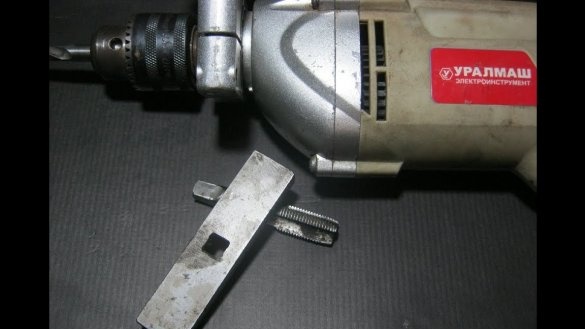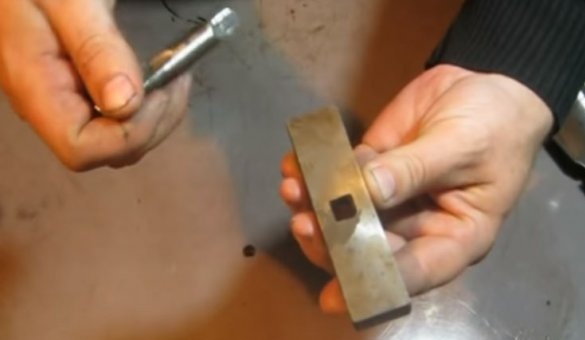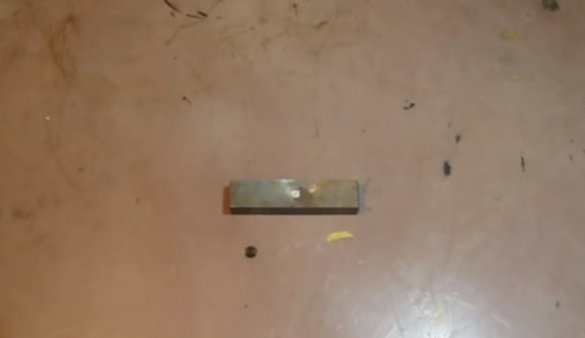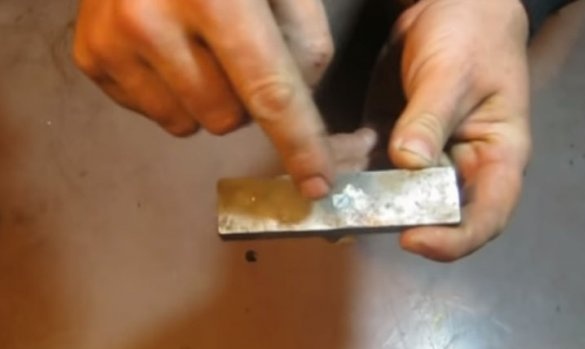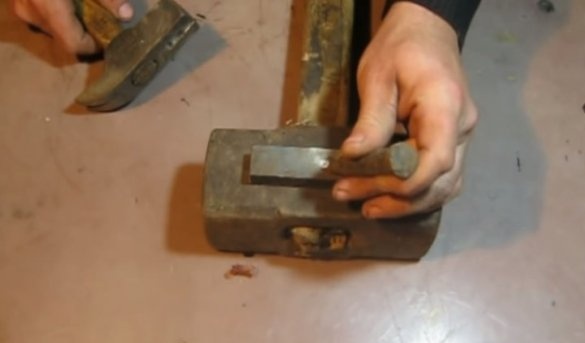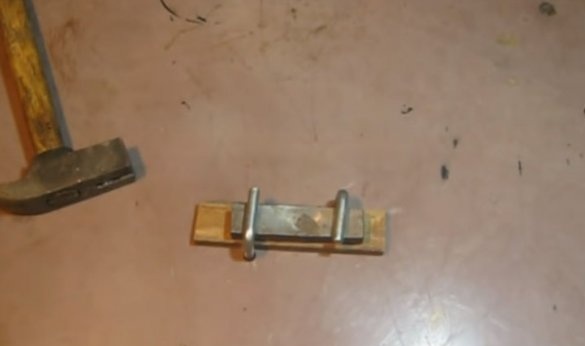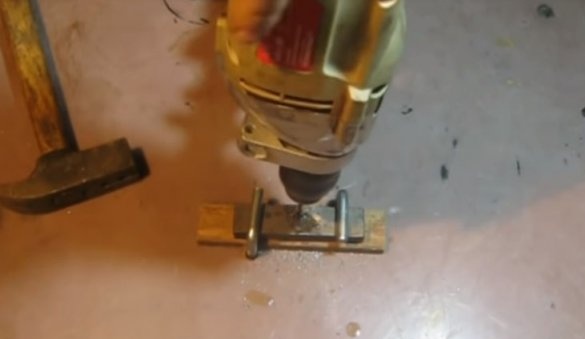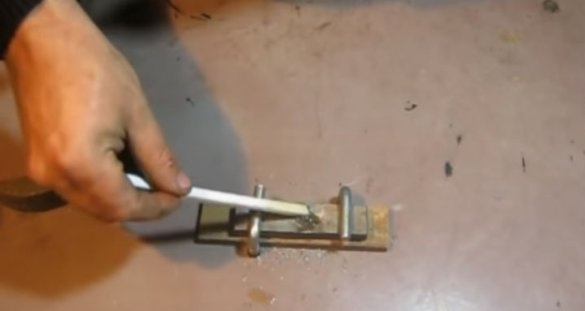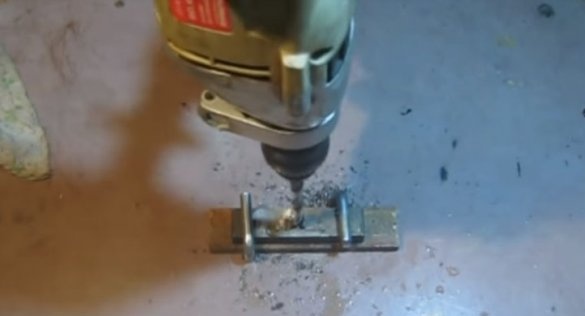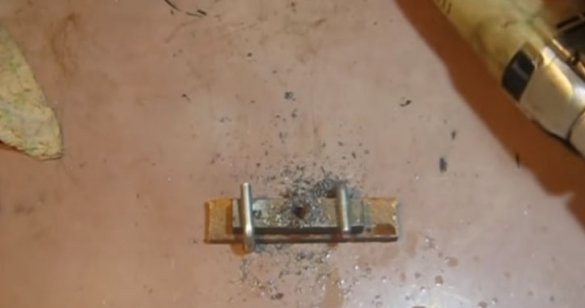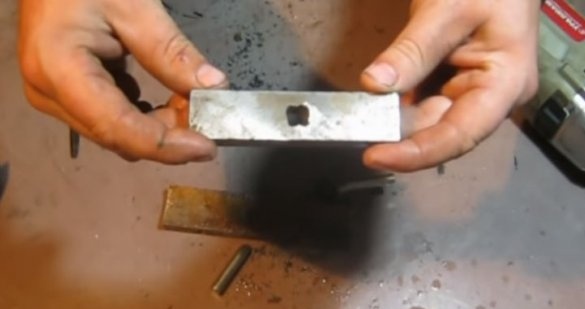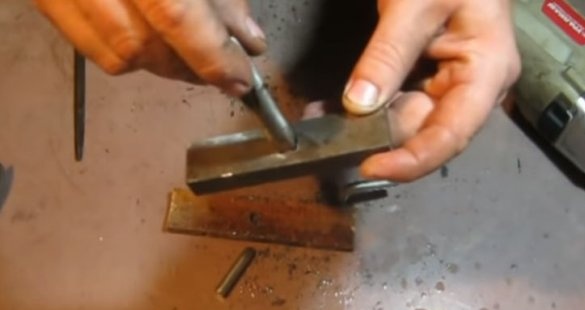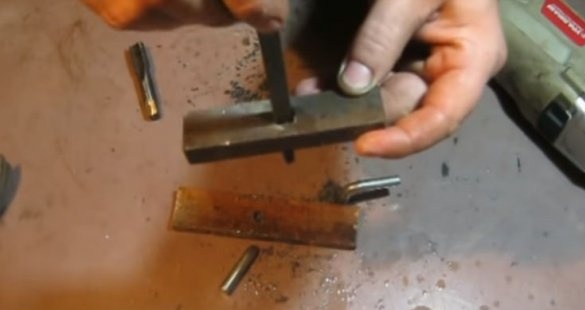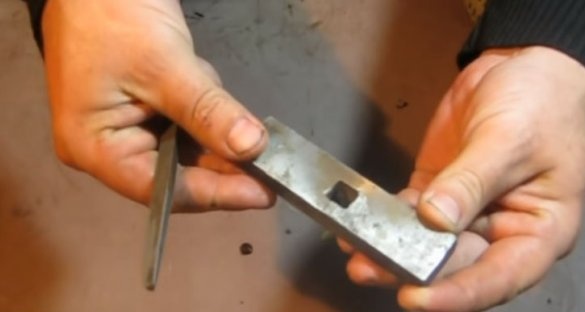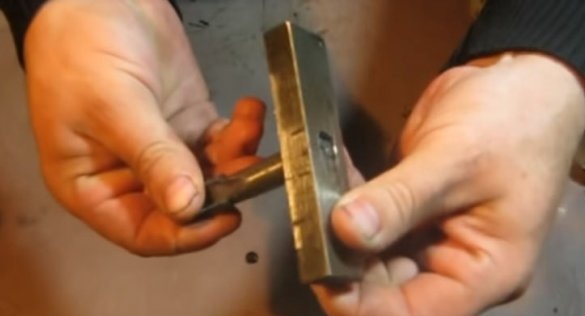Any hole, if it is made using a drill, has a round shape and in order to make it square, you need to work well with some filing tool. Let us consider how to drill a square hole in metal with minimal use of a file using the example of manufacturing a convenient and reliable tap wrench.
In order to make a wrench with a square hole for a tap having a side of 10 mm, you will need:
1. Metal rectangular bar-workpiece 13 mm thick.
2. Electric drill.
3. Kerner.
4. Center drill.
5. Drills for drilling metal with a diameter of 4mm and 9mm.
6. Any coolant.
7. A small trihedral file.
The manufacture of the winch is as follows:
1. A paper is made of paper with a side of 6 mm, mark the center on it and glue it on the workpiece at the place of drilling the hole.
2. Lay the blank on a suitable anvil and mark the tops and the center of the glued square on it with a core.
When the paper is removed from the surface of the workpiece, five corrupted marks remain on it.
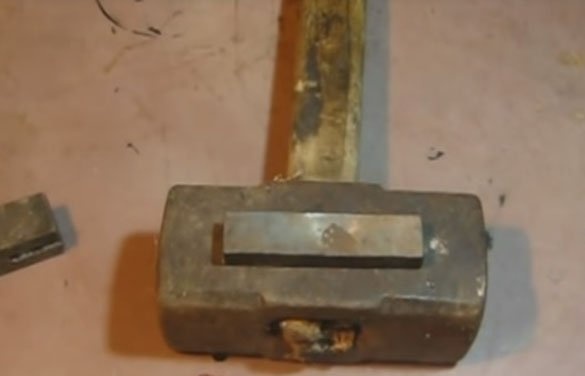
3. Fix the workpiece with clamps on the surface of the workbench, having previously placed a wooden plank under it.
4. A center drill drills all five holes marked on the workpiece.
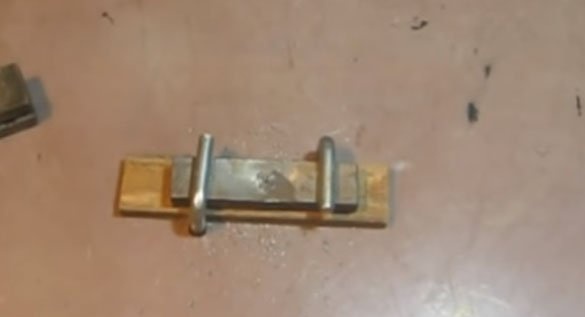
5. Finally drill with a drill having a diameter of 4 mm, four holes in the vertices of the square,
not forgetting to cool them with a small amount of coolant from time to time.
6. Reducing the rotational speed of the drill, a 9 mm diameter drill will finally drill the last, fifth hole located in the center of the square, again without forgetting to cool it from time to time.
7. Disassemble the design of the clamps. The result is a billet with a drilled square hole.
However, the edges of the hole are uneven and the tail of the tap does not “fit” into it.
8. In order for the shank of the tap to enter the hole completely, its edges are additionally treated with a file.It is more convenient to do this, of course, holding the workpiece in a vice, and all the work takes no more than 15-20 minutes.
After file processing, the square hole in the workpiece becomes smooth, accurate, and the tail of the tap goes into it completely.
This method of drilling a square hole in a metal billet reduces labor costs when processing its edges to a minimum. And the resulting collar will, when used, hold the tap shank securely and firmly. With careful storage, several generations of craftsmen will be able to use it.
Explanatory video on drilling a square hole in a metal workpiece.

